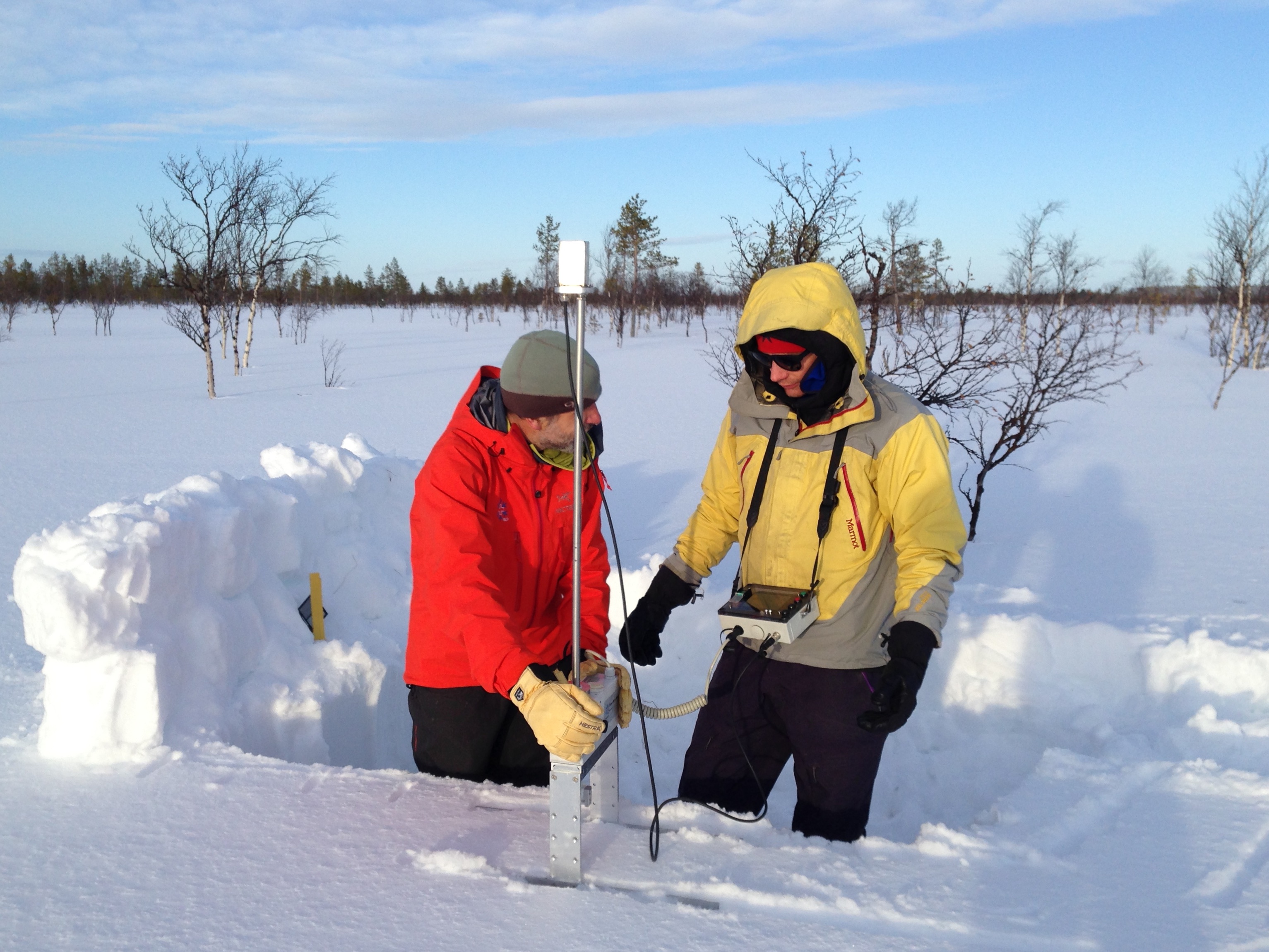 This is the second of five articles on the IASC Working Groups. This month is dedicated to the IASC Cryosphere Working Group. Read on to find out more about its members, scientific foci, future activities, and much more.
This is the second of five articles on the IASC Working Groups. This month is dedicated to the IASC Cryosphere Working Group. Read on to find out more about its members, scientific foci, future activities, and much more.
The Cryosphere Working Group (CWG) is composed of 40 members from 23 countries, including three early-career IASC Fellows, and supported by a Secretary. Our research interests span all elements of the cryosphere in the Arctic - the frozen regions of our planet - including sea ice, mountain glaciers, ice caps, icebergs, the Greenland ice sheet, snow cover, permafrost and seasonally frozen ground, and lake and river-ice. The CWG helps promote activities that enhance our understanding of these cryospheric components of the Arctic/sub-Arctic and their interaction with the Earth's climate system.
If you have any questions about the Cryosphere Working Group, please get in touch with any of our working group members. We strongly encourage more involvement (e.g. funding proposals) from non-working group members.
Scientific Themes
While the CWG is interested in all elements of the cryosphere, we have structured our activities across three distinct themes:
Atmosphere‐glacier‐ocean interactions: implications on the pan‐Arctic glacier mass budget
Cutting barriers in snow knowledge
Causes, impacts and prediction of extreme Cryospheric events
Additionally, the working group is engaged in other cross-cutting activities such as the Terrestrial Multidisciplinary Observatories for the Study of the Arctic Climate (T-MOSAiC).
Atmosphere‐Glacier‐Ocean Interactions: Implications on the Pan‐Arctic Glacier Mass Budget
The response of glaciers to climate change is strongly linked to both atmospheric changes and ocean circulation, which can result in strongly contrasting patterns of glacier mass balance across the Arctic. Many of this theme's activities are planned through the Network on Arctic Glaciology (NAG), which facilitates research on the dynamics and mass budget of Arctic glaciers and their impact on global sea-level and regional freshwater runoff.
Main network activities take place during the annual meeting, where we present and discuss new science results and future research collaborations, along with coordinating joint field work activities. NAG also runs thematic workshops focusing on glacier-ocean-atmosphere interactions to (i) quantify the relative importance of surface melt and iceberg calving for pan-Arctic glacier/ice cap changes; and (ii) identify and quantify atmospheric and oceanographic processes that drive changes to the mass balance of Arctic glaciers and ice caps. The last workshop (Obergurgl, Austria, January 2018) had a cross-cutting character, with a focus on Arctic glaciology and proglacial marine ecosystems and involvement of the Marine WG), and this focus will be maintained for the next workshop (Geilo, Norway, 20-24 January 2019).
 Cutting Barriers in Snow Knowledge
Cutting Barriers in Snow Knowledge
Snow is a key component of various elements of the Earth's cryosphere through its impact on glacier and ice sheet mass balance and sea ice variability. Through this theme we seek to promote an improved common knowledge of snow related processes by bringing together snow-interested scientists working within the various IASC working groups.
We hope to improve methods and standardized protocols used to measure the physical and chemical properties of the snow pack through targeted workshops and the continuation of the Snow Science winter schools. The 4th Snow Science Winter School took place in Col du Lautaret, France, in February 2018, and the next next (5th) will take place in February 2019 in Finland.
We also hope to develop a cross-disciplinary “snow platform” in the form of blogs and workshops, and are working to implement a comprehensive program of key snowpack measurements (physical and chemical) at various INTERACT stations, super sites (CryoNet) and IASOA-stations. The next half-day meeting will take place in Vienna, Sunday, 8 April 2018, 13:00-17:30 (click here for further info) and a meeting during Polar2018 in Davos.
Causes, Impacts and Prediction of Extreme Cryospheric Events
Extreme cryospheric events include a wide-variety of phenomena, such as intense storms/cyclonic activity, severe warm periods, droughts, rapid iceberg calving events, anomalous ice sheet surface melt, avalanches, and heavy rain-on-snow events; many of which are becoming more frequently observed in the Arctic. Despite their importance to the climate system, cryospheric extremes have arguably been overlooked to-date.
In order to better define and enhance research activities related to this theme, the CWG will host a workshop in Helsinki this spring (25-27th April 2018) to facilitate the exchange of research methods and findings and to enhance links across international research activities (click here for further info). The overarching aim of the proposed workshop is to review our understanding of cryospheric extreme events in the past, present and future, and to identify future research requirements.
T-MOSAiC
The Terrestrial Multidisciplinary Observatories for the Study of the Arctic Climate (T-MOSAiC) Program is an IASC cross-cutting initiative led by the Terrestrial Working Group and with the participation of the Cryosphere and Social and Human WGs held. T-Mosaic held its 1st Workshop in Arctic Change 2017 on 11 December 2017. The workshop, which consisted of a morning Steering Committee meeting and an afternoon open-session, generated a wide interest in the community and already joins several projects. The international secretariat is under implementation at the University of Lisbon and the program website is at www.t-mosaic.org. The next workshop will be held on 20 June 2018 at Polar2018 in Davos with the objective of defining the science program.
Get Involved
If any of these initiatives are of interest to you, please reach out to the organizers, the CWG, or the IASC Secretariat to get involved. And if you have your own ideas that work toward these scientific aims, the CWG wants to hear those, too!
